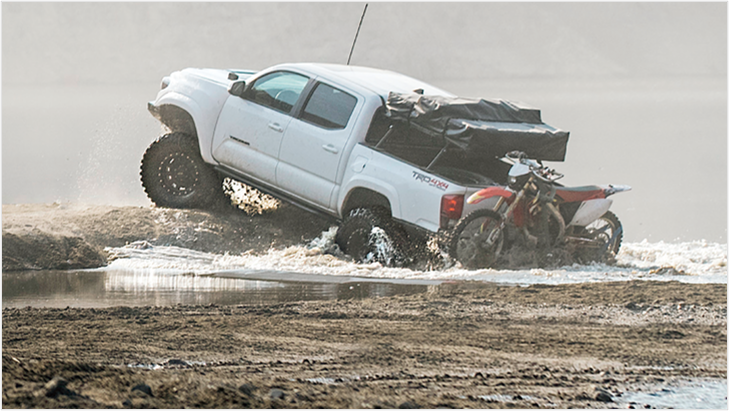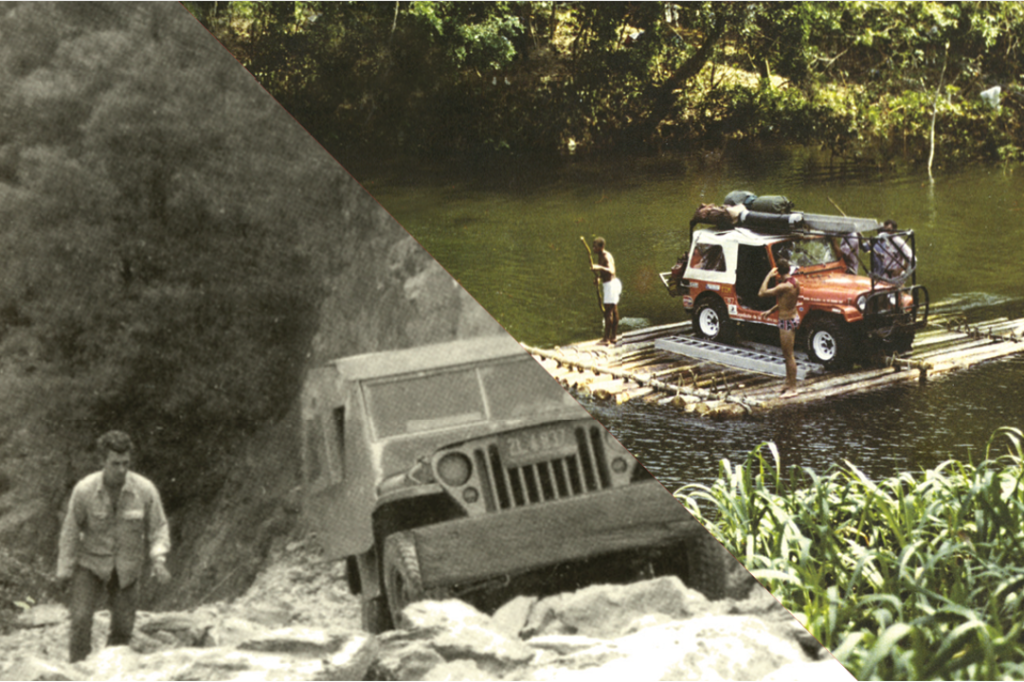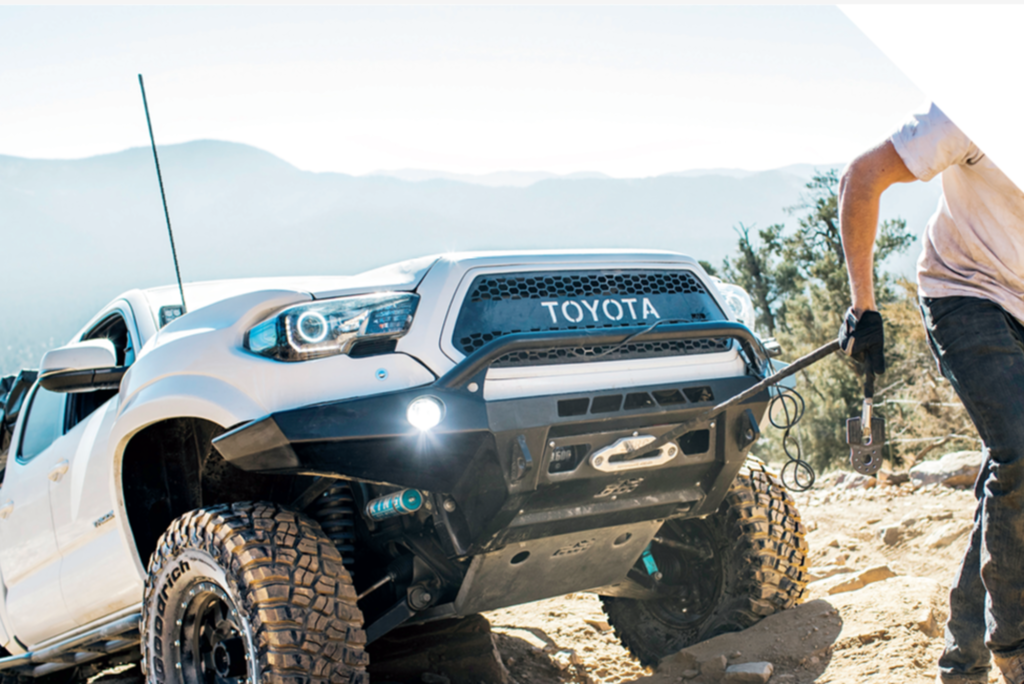Tire Selection
The tires ability to perform should always outweigh its aesthetics.
All-Terrain vs. Mud-Terrain. Choosing the right tire is a crucial part of preparing your vehicle for off-road. Unless you are into racing or extreme rock crawling, you’ll probably be looking at either an all-terrain or mud-terrain tire. Don’t be fooled into thinking the tougher-looking mud-terrain tire is always the better option – the tire’s ability to perform should always outweigh its aesthetics.
Knowing your driving style and the types of terrain you’ll likely encounter is key to making a well-informed decision. Do your research, ask questions and be realistic about what you need from your tires.
SECTIONS
- ALL-TERRAIN TIRES
- MUD-TERRAIN TIRES
- SIZING
- TIRE PRESSURE
ALL-TERRAIN TIRES
As the name indicates, all-terrain tires are designed to provide considerable traction over a wide range of terrains. The less aggressive tread design provides a quieter highway ride than mud-terrain tires and offers better handling on pavement as well.
IDEAL FOR:
- Long-distance overlanding expeditions
- Intermittent trail-to-highway driving
- 4x4 trucks built for hauling or towing
- Winter conditions
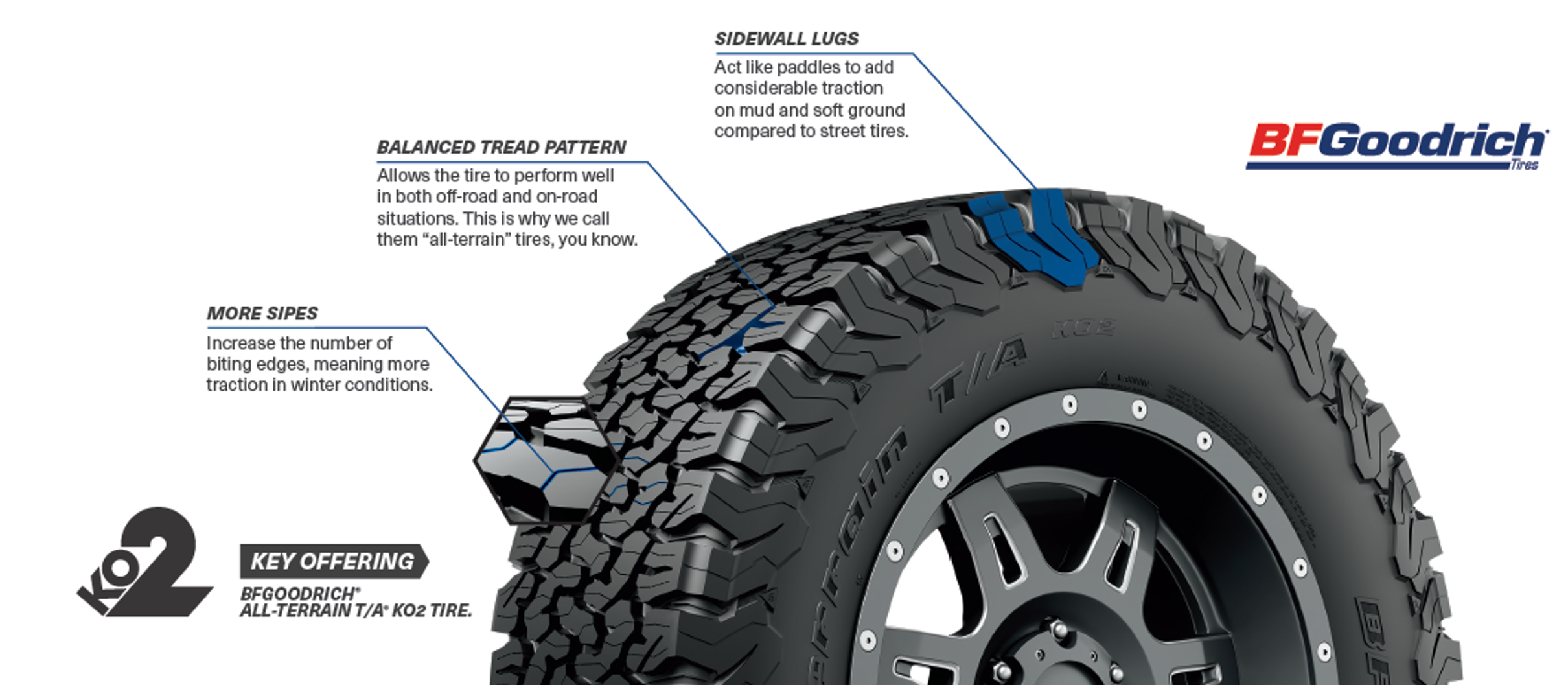
MUD-TERRAIN TIRES
The large tread blocks and voids associated with a mud-terrain tire’s tread effectively evacuate mud and soft soil while maintaining traction on rocky and uneven trails. The aggressive tread design can lead to more noise and reduced fuel economy when compared to an all-terrain tire. But for those who plan to be off-road more than on, a mud-terrain tire is ready to take on the toughest terrain imaginable.
IDEAL FOR:
- Deep mud and loose soil like sand and silt
- Uneven, rocky trail surfaces
- Aired-down, crawling situations
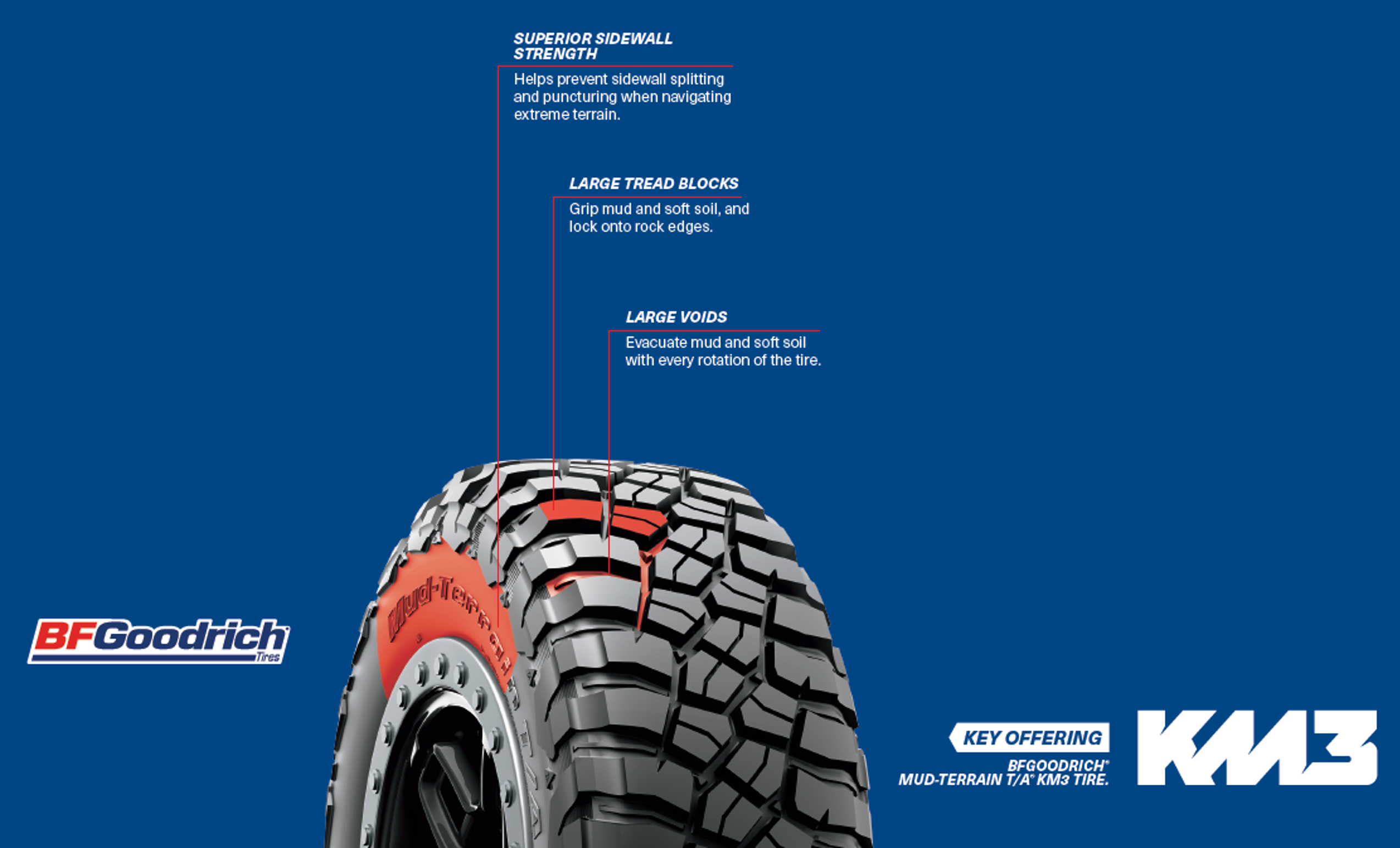
EXTREME SPECIALTY TIRES
Not everyone drives their rig to the trail. For the most extreme off-roader, many manufacturers have niche offerings for specialized sports. For example, BFGoodrich offers the BFGoodrich Baja T/A KR3 tire for desert racing and the BFGoodrich Krawler T/A KX tire for extreme rock crawling. You won’t be able to grab these tires off the shelf, so check with a local dealer to order what you need.
PRO TIP
Sizing
In the world of four-wheeling, size really does matter. The correct tire size can help your vehicle clear obstacles and even perform better in softer terrains. But before you buy, make sure you know they’ll fit or that you know how to make ‘em fit.
Increasing the tire size beyond factory specifications may require aftermarket modifications, like a lift kit. But jacking up your rig may require further alterations such as extending the brake lines, modifying the steering and other complicated modifications that may not be worth the few extra inches. And be aware of how vehicle alterations will affect your vehicle – making the vehicle taller can affect handling and make the vehicle more prone to rolling.
Remember, tow trucks stay on the pavement. So before you get stuck miles from civilization, make sure you pick the tire best suited for your adventure. Most tires suitable for off-road will be classified into one of two sizes: LT-metric or high-flotation.
LT-METRIC SIZES
LT-metric tires are designed specifically for light trucks. They have more reinforcement and a higher load range than typical passenger tires, meaning they can handle more punishment and are better suited for towing, which is why LT-metric tires are also used as the original equipment tires on heavy-duty trucks.
SIZE IT BEFORE YOU BUY IT
If you opt for larger replacement tires, make sure your new size will fit. Here’s what the numbers mean:
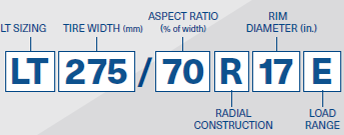
HIGH-FLOTATION SIZES
Flotation tires perform like LT-metric tires, but the sizing for flotation tires is much easier to understand than the sizing for LT-metric tires. Even though LT-metric tires have some additional load-carrying capacity, flotation tires are becoming the go-to upgrade for anyone who wants bigger tires on their vehicle.
KNOW THE DIFFERENCE
High-flotation sizing is structured differently than LT-metric tires. Make sure you are calculating correctly.
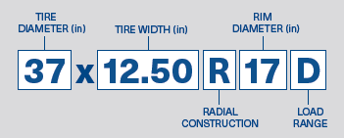
ORIGINAL EQUIPMENT CHECK
Never assume that the tire that comes on a new vehicle is designed for the rigors of off-road. Light trucks and SUVs may come equipped with P-metric (passenger) tires as their original equipment. This is done to uphold fuel efficiency promises from the manufacturer. If your off-road vehicle comes with P-metric tires, give them back or build your kids some tire swings. These are designed for highway use only and should be replaced with an LT or flotation size immediately.

TIRE PRESSURE
You don’t need a PHD in biochemistry to know that proper tire pressure will affect the performance of your vehicle. It will help prolong the life of your tires and can help your vehicle navigate certain terrains. Since the optimum tire pressure depends on the specific situation, it’s important to travel with a reliable pressure gauge and air compressor at all times.
ON-ROAD AIR PRESSURE
Tire pressure can affect your vehicle’s handling, traction and treadwear while driving on pavement. To calculate the correct pressure for driving on-road with OE tires, always follow the recommendation from your vehicle’s manufacturer for front and rear. This can be found in the owner’s manual or on the tire placard located inside the driver’s side door.
However, if you’ve moved from an OE P-metric size to an LT-metric or high-flotation size, then that’s a whole new ballgame. Consult the specific recommendation for that tire’s psi to ensure it’s at the correct pressure on your vehicle.
OFF-ROAD AIR PRESSURE
Lowering the tire pressure, or airing down, can offer a smoother ride while driving off-highway. It also expands your tire’s footprint, resulting in better traction over rocks and loose terrain. How much to air down has a lot to do with your personal preference, so it’s a good idea to consult an experienced driver before airing down for the first time.
Just in case you weren’t listening in science class, remember that gas expands when heated and contracts when the temperature declines.
- Check your tire in the morning prerun, before ambient temperature rises.
- Direct sun exposure will significantly increase pressure.
- If the pressure is correct while a tire is warm, it will likely be underinflated when it cools down.
- Lowering pressure too much could push the tire of the rim, damaging the tire and wheel. (You may want to invest in beadlock wheels to prevent dismounting.)
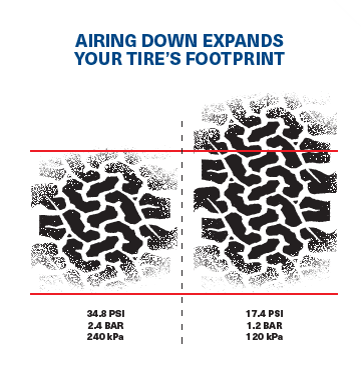
FLAT TIRE PREP
Routinely inspect your tires for cuts, bulges, or any other signs of damage. And be prepared in case you get a flat. Always carry the following equipment:
- Full-size spare tire and wheel (+/- 1 inch of the diameter of the main tires)
- .4x6 block to give your jack extra reach
- Tire plug kit (temporary trail fix)
- Air compressor and gauge
Once you’re back on paved road, see an expert to repair or replace your tire. Tires must be replaced if the sidewall has been punctured or the tire has any cuts or gashes.
PRO TIP
NEED MORE HELP TO PLAN A TRIP
Our Trip Planning section gives lots of helpful information to get you started.




